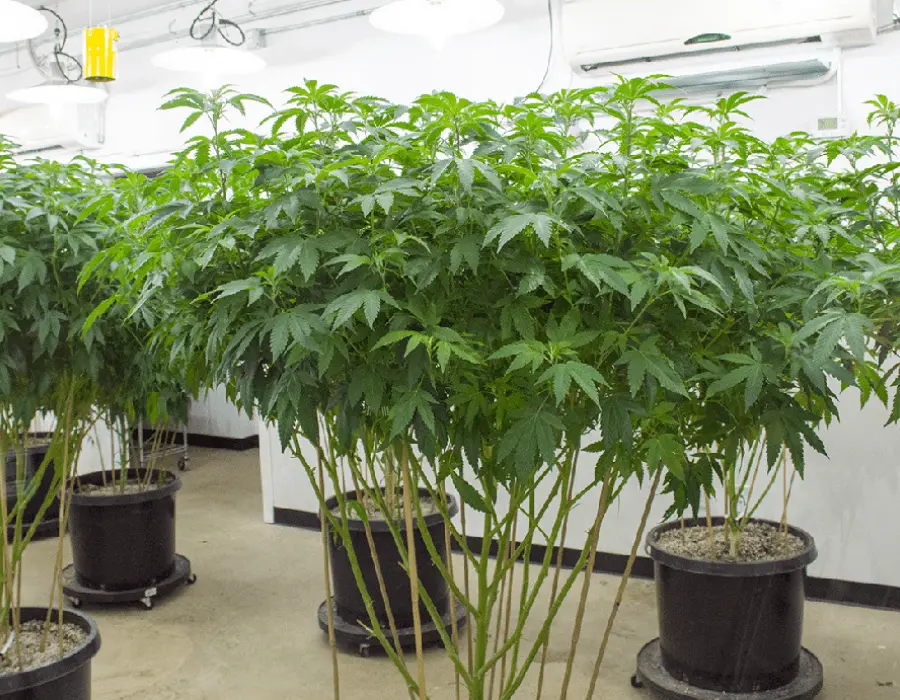Monster cropping is a plant training technique that allows growers to achieve desired big yields while continually harvesting their cannabis crop and bypassing the need for mother plants. Clones are taken from flowering plants, rooted, and induced to return to their vegetative states by manipulating their light cycle, which causes them to grow bushier and with more side branches.
This plant training method is precarious but versatile. It can be easily combined with low-stress training techniques such as the Screen of Green (SCRoG) or tying down. The growth habit of re-vegged flowering plants is vigorous, with increased bud sites which are attractive for cultivators who want to maximise their growing space.
The grower thinking about monster cropping their marijuana plants should start by considering one of the basic building blocks to any successful cultivation operation: clones.
What Are Clones? Why Are They Useful?
There are two ways to start growing cannabis: seeds or clones. This tutorial will focus on clones as they are key to successful monster cropping.
Clones are cuttings taken off of a “mother plant” in its vegetative phase. After they have rooted, clones are planted and develop into a new plant that is genetically identical to the mother. This genetic consistency is one of the many advantages offered by a clone crop.
Genetic consistency is highly prized among growers and is the foundation for famous cannabis strains such as Zkittles, Gelato, Sour Diesel, and Super Lemon Haze grown around the world. Growing clones is the tried-and-tested way to stabilise the desired traits of cannabis plants – such as flavourful, distinctive terpenes and vigorous growth habits – allowing them to be grown year after year.
This is an agricultural and horticultural practice that goes back for many centuries, and any growers with gardening experience who have divided plants to propagate them have practised a form of cloning.
Each new generation of clones will express the same flavour, taste, and effects in their flowers as the mother it was cut from. Cultivators find clones advantageous as they will have the same rate of development across the crop of clones which reduces the number of variables to manage and simplifies scheduling and nutrient programmes.
Seed plants, although vigorous, express a broader range of variability in their growth habits which makes managing a seed crop a little more unpredictable.
Growing out clones will allow cultivators to become highly familiar with the specific characteristics of their strains, which is handy for managing the challenges of growing.
